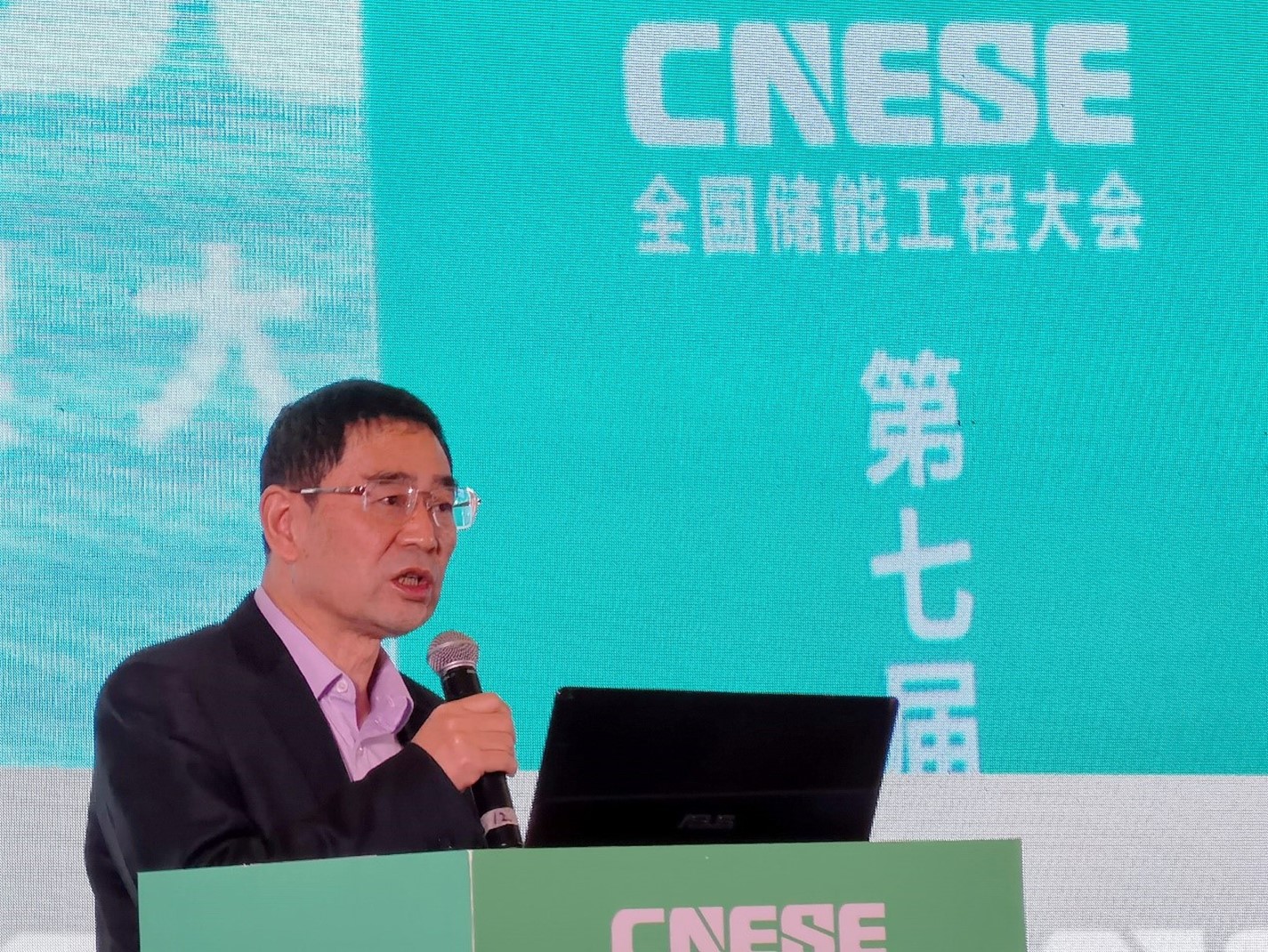The 7th National Conference on Energy Storage Engineering was held in Shenyang, Liaoning, from October 11 to 12, 2021. Academicians of Chinese Academy of Engineering, Prof. Fusheng Pan and Prof. Guodong Wang, delivered the plenary speeches on "Magnesium-based Energy Storage Materials with Great Potential" and "A Preliminary Exploration on the Roadmap of Carbon Peaking and Carbon Neutralization in Chinese Iron and Steel Industry", respectively. With the theme of "Efficient Conversion - Green Energy Storage - Cyclic Development", experts, scholars and entrepreneurs in the field of energy storage engineering and industry were invited together to discuss the development of energy storage science and technology innovation in the context of carbon peaking and neutrality strategies in the conference. The conference set up eight sessions in total,including "Advanced Energy Materials and Testing Technology", "New Secondary Ion Battery", "Metal Air and Lithium-Sulfur Battery", "Hydrogen Energy and Fuel Cells", "Lithium-Ion Batteries and Engineering", "Energy Storage Engineering and Physical Energy Storage", "New Energy Devices and Electrode Design".
Prof. Fusheng Pan delivered a plenary speech entitled "Magnesium-Based Energy Storage Materials with Great Potential", pointing out that in the context of carbon peaking and carbon neutrality, energy storage materials and engineering have encountered a once-in-a-lifetime opportunity. Energy storage and transportation are the bottlenecks of new energy development and application, which are the important scientific and technical challenges in the new era. The speech introduced the energy storage characteristics, technical problems, research progress and application prospects of magnesium-based hydrogen storage materials and magnesium battery materials. Especially, the speech elaborated the significance of safe and efficient storage and transportation of hydrogen energy to the national hydrogen energy strategy, and the significant application value in fuel cell vehicles, wind energy industry, light energy industry, power industry and aerospace. Prof. Fusheng Pan also pointed out that the magnesium-based hydrogen storage material is the solid material with the highest hydrogen storage density, which makes the magnesium-based hydrogen storage material has great market prospect. Once the technology of large-scale application is outbroken, it will fundamentally transform the problems of traditional energy storage mode, such as low efficiency, high cost and poor safety. On the other hand, magnesium ion battery is a new generation battery with great potential and advantages such as abundant resources, high safety, low cost and low environmental pollution. Now the magnesium ion battery attracts the world's attention. More and more scientists and technicians focus the research on cathode materials, anode materials and electrolytes.
Science and Technology Daily believes that the construction of a new energy supply system requires a high-degree amalgamation of multidisciplinary and multidimension in materials science and engineering, metallurgical engineering, new energy, artificial intelligence, electrochemical technology and power grid technology in terms of energy structure, energy consumption and artificial carbon fixation. Especially, the energy storage technology attracts more and more attention from various industrial fields. In this context, this national conference on energy storage engineering discusses the major technical problems, which are key questions to the development of the industry. This conference is not only promoting the basic research and application of energy storage, but also enhancing the innovation capability of energy storage engineering and to promote the high-quality sustainable development of the industry significant.
The National Engineering Research Center for Magnesium Alloy of Chongqing University is the largest institution focusing on magnesium and magnesium alloy in the world, with more than 50 professors and more than 300 doctoral and master students. Magnesium-based energy storage materials are currently the main research direction of the center. This world's largest magnesium-based energy storage materials team has been built in terms of magnesium batteries and magnesium hydrogen storage. National Engineering Research Center for Magnesium Alloy have completed a number of important achievements, which reaches the advanced level in world with important indicators in the magnesium-based solid hydrogen storage, magnesium primary battery, and magnesium secondary battery. With the cooperation of Guangdong National Technology, the application demonstration base of magnesium-based energy storage materials of Chongqing University and Greater Bay Area is about to be completed. The application demonstration line of magnesium-based hydrogen storage power generation system for renewable energies was completely built. The trial production of the magnesium ion pouch cell is also on the way. Moreover, the advanced solid magnesium alloy hydrogen storage material is developed with hydrogen storage density more than 6.5wt.% and absorption temperature lower than 150℃. The outstanding electrodes of magnesium ion battery is developed with the energy density of 900Wh/kg.

Prof. Fusheng Pan is delivering the plenary speech in the 7th National Conference on Energy Storage Engineering

